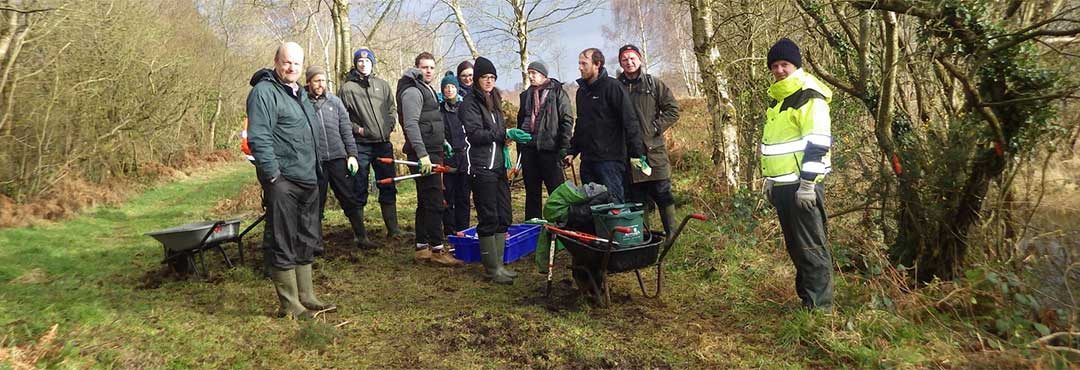Latin name: Euphydryas aurinia
Family: Nymphalidae
Description of the Marsh fritillary
The Marsh Fritillary, found all over UK, is one of our most endangered butterflies. It is also one of the most beautiful, and can be highly variable in appearance. The wing pattern can range from mostly orange, with thin greyish markings, to bright patterned orange, red and cream, with heavy black markings. Within a few days of emergence from the cocoon, many of the wing scales get rubbed off giving the butterfly a shiny or greasy appearance which led to its former name of “Greasy Fritillary”.
The butterfly forms close-knit colonies on quiet patches of habitat (typically 5 – 20 ha). Adults rarely fly more than 50-100m but a small proportion seem to make their way further afield. This butterfly is renowned for its large fluctuations in population size that make it highly prone to local extinction, but which in “good” years enable it to spread and colonise new sites as well as patches of less suitable habitat.
Size
Male – 30-42mm
Female – 40-50mm
Historical Info
Recently the Marsh Fritillary has only been recorded on 40% of the sites it used to colonise 150 years ago, and is considered extinct in eastern England and Scotland. It was once widespread in Britain and Ireland but has declined severely over the twentieth century, a decline mirrored throughout Europe – places where it has been found are declining at a rate of 10% every ten years. Its populations are highly volatile and the species needs extensive habitats or habitat networks for its long term survival.
Eight definite colonies of marsh fritillary were confirmed by web counts. The colonies, in Co Down, Co. Armagh, Co Antrim and Co. Fermanagh, were found on mires and wet grasslands (6 sites), in dune heath (1 site) and dune grassland (1 site). East Down was identified as a key area for the species in Northern Ireland.
The Marsh fritillary’s Habitat
The majority of colonies are on ancient calcareous grasslands, but the butterfly can breed successfully in a wide variety of other habitats including humid heath land, unimproved meadows, disused railway cuttings, and in damp clearings and rides in woodland. In former times, colonies that had been lost due to temporary habitat degradation, climatic influence or the effects of parasitism could be recolonised if there were other populations nearby. Sadly, in the modern world, former habitats have become neglected, fragmented and isolated, with the result that the distribution is now extremely patchy, with local extinctions occurring at a very alarming rate.
Diet
The main food is Devil’s-bit Scabious (Succisa pratensis). On calcareous grassland, it occasionally uses Field Scabious (Knautia arvensis) and Small Scabious (Scabiosa columbaria).
Threats to the Marsh fritillary
Habitat fragmentation – small areas of isolated populations are easily affected by sudden changes to habitat, natural ups and downs in numbers and genetic decline.
Habitat deterioriation – Intensive farming methods mean that there are less areas suitable for breeding.
Grazing – If areas are overgrazed or undergrazed it again results in a loss of habitat for the Marsh Fritillary.

